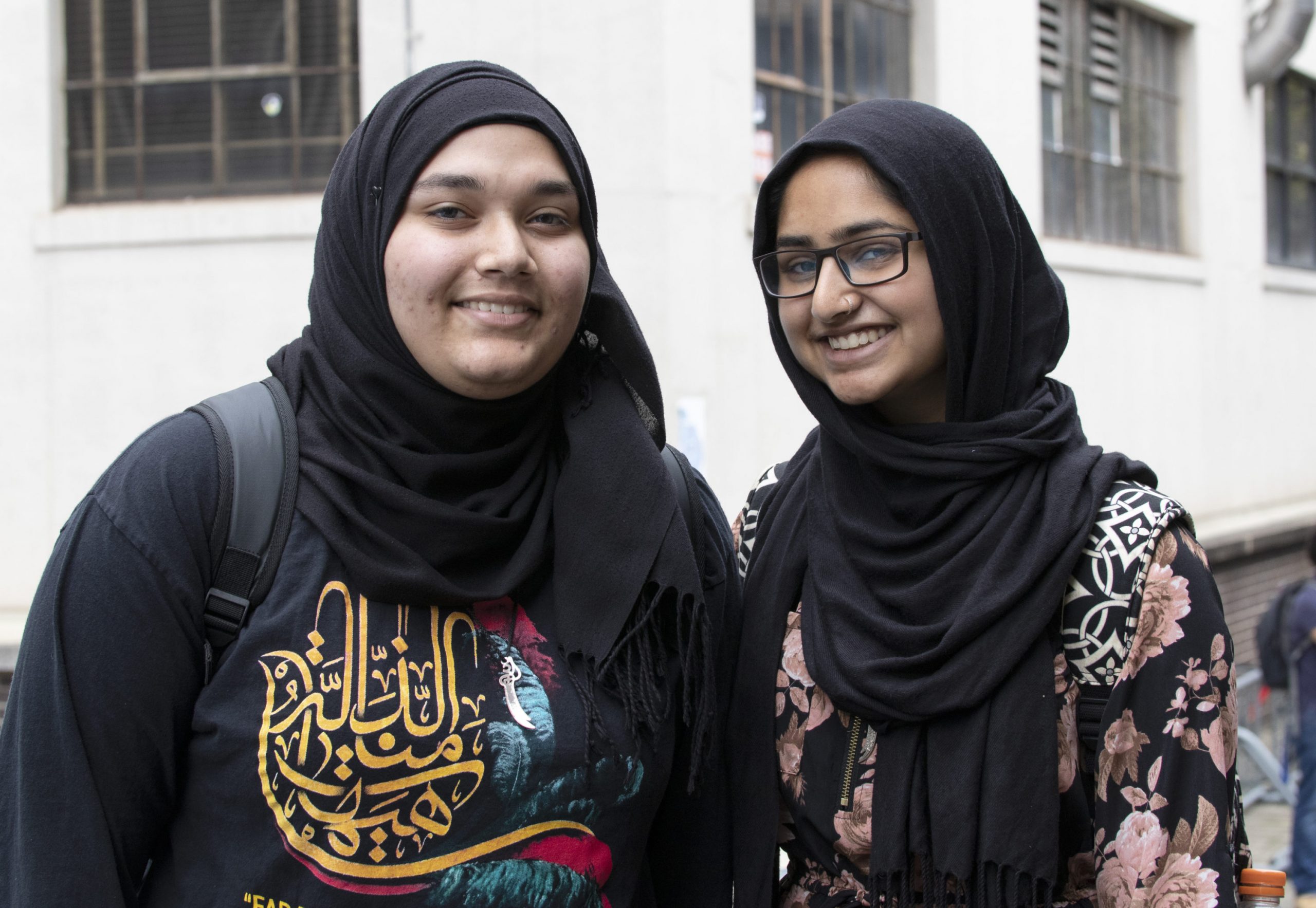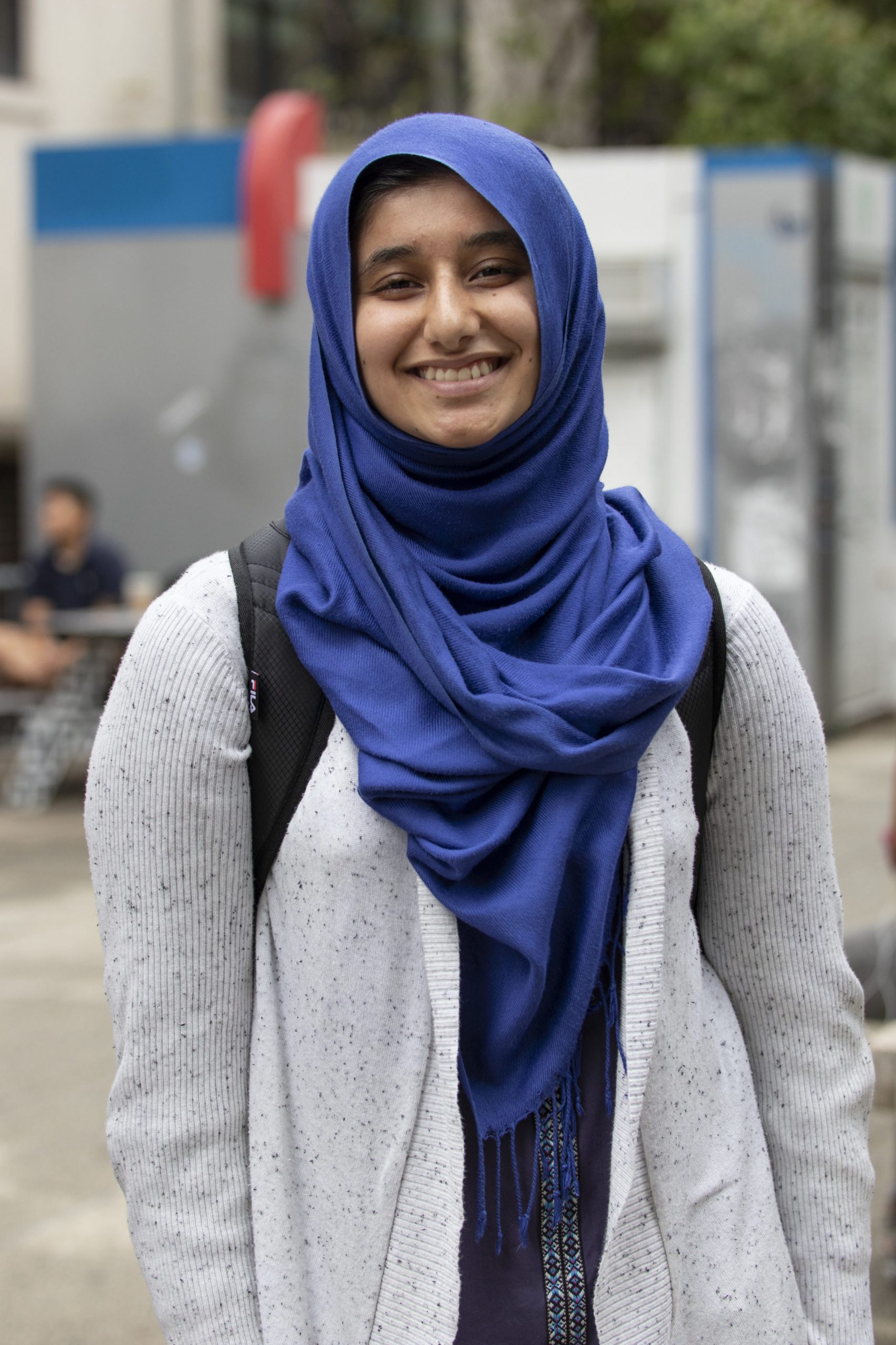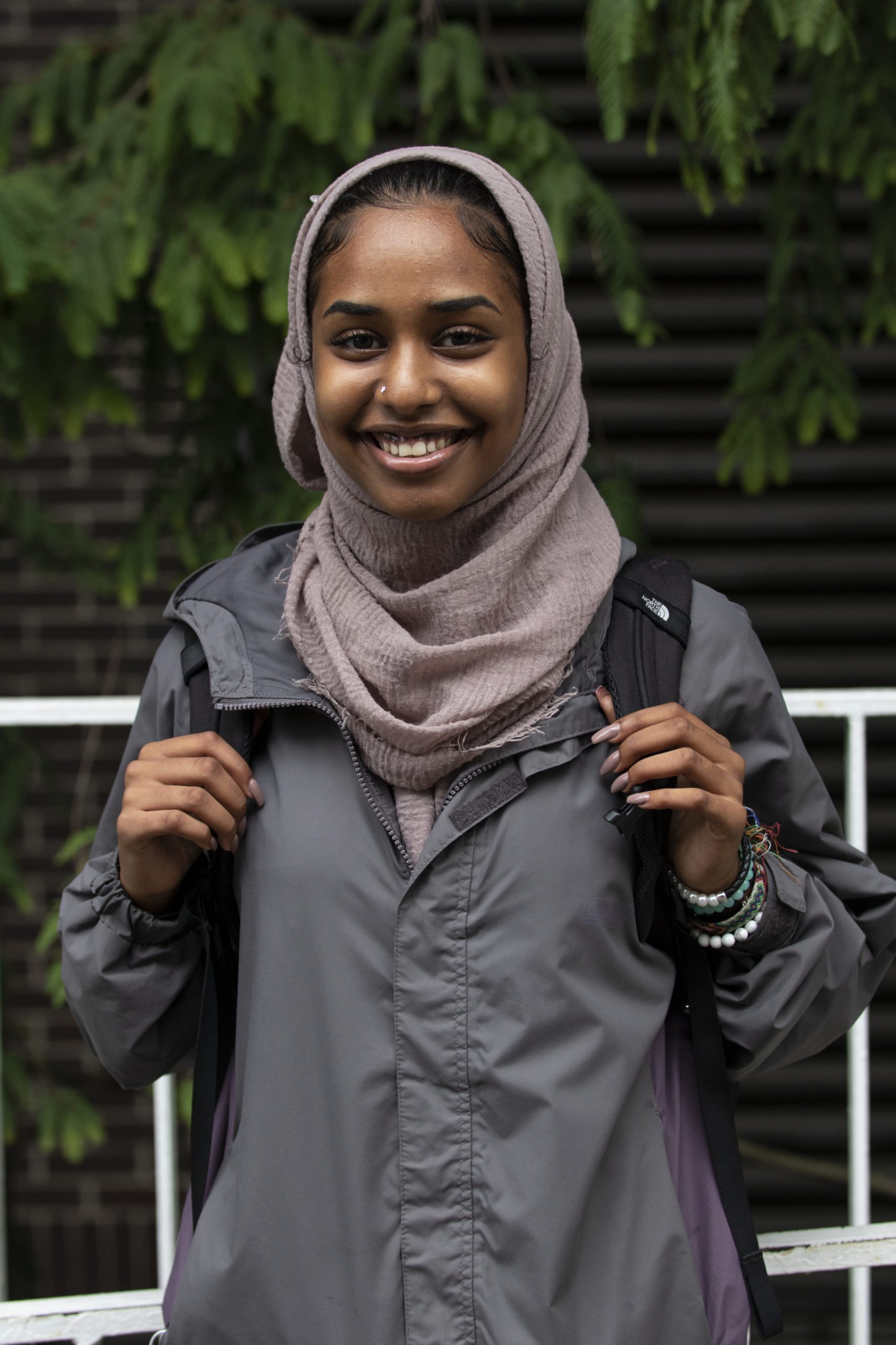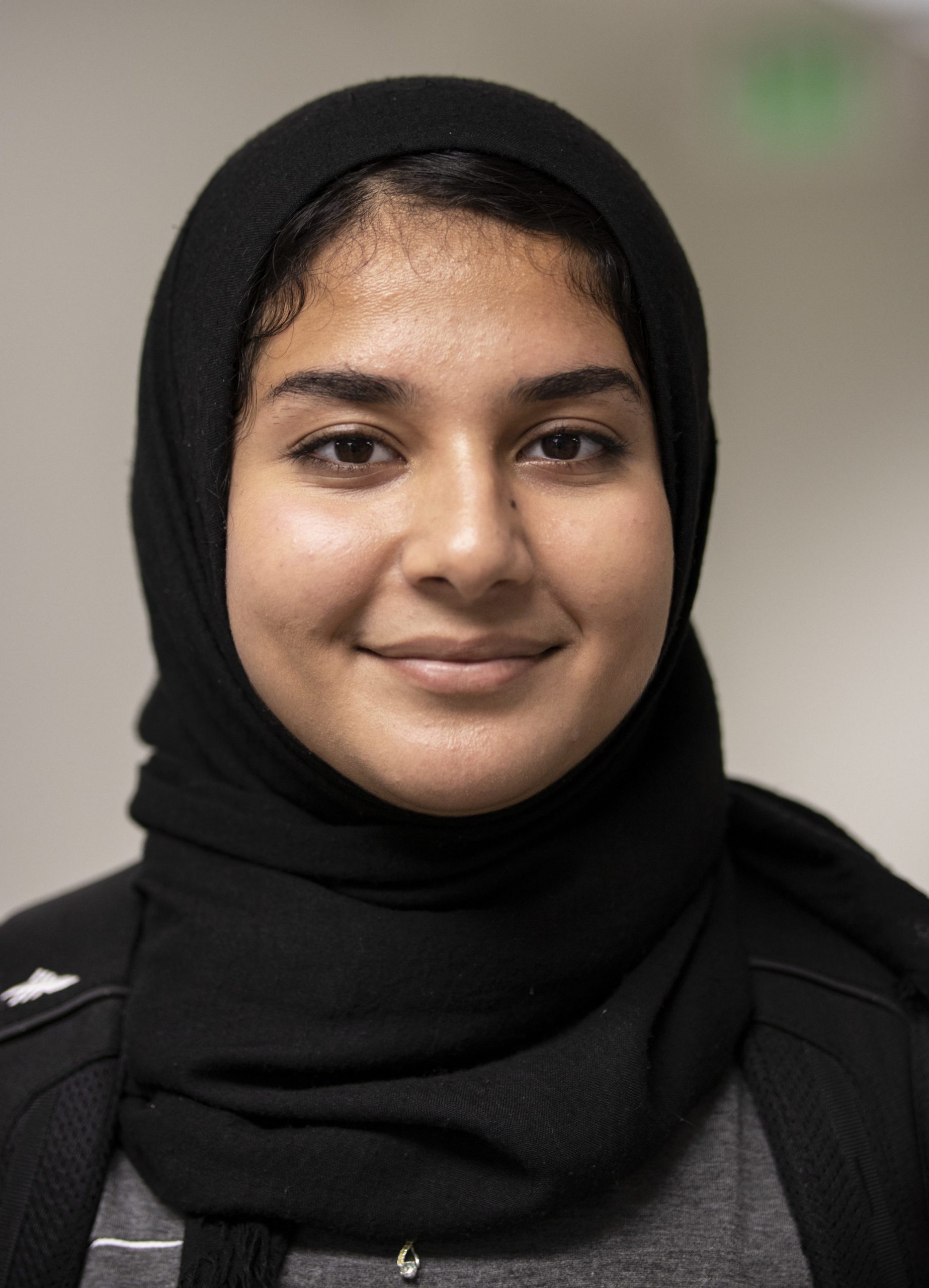
These Muslim women want you to know this
When a woman chooses to don the hijab, she typically will cover her entire body, except for her feet, hands and face. The hijab specifically denotes a specific type of Muslim head covering: the headscarf, which can be purchased for hijabs in particular or refashioned from scarfs designed as neck accessories.
Many of these Muslim women began wearing the hijab as adolescents. They spoke with The Signal to discuss their experiences with discrimination and power alike as covered women and what they wish more people understood about the hijab.
WHEN AND WHY DID YOU DECIDE TO WEAR THE HIJAB?
“It was the first day of 6th grade. I think I was 11 … [My thought process was] ‘Oh this is a great opportunity, I’m going to middle school, new school, new friends’, things like that. So I decided to put it on,” Asia Mujeeb, a senior studying biology, said.
Rahmah Keen, a freshman studying political science, wore the hijab in grade school as well.
“I’ve worn it since I was a kid. I went to an Islamic school as a child, so I guess it was part of the uniform and stuff. Because of that, I got used to it. Honestly, if I take it off, I feel so awkward if I don’t wear it. It’s a part of me now,” Keen said. “It empowers me.”
Women wanted to emphasize that they choose to wear the hijab of their own volition.
“I started wearing it towards the end of junior year. It wasn’t forced on me or anything – I actually chose to wear it myself and I really enjoy it,” freshman Raneeb Panwala said.
Some women also noted that they were enthusiastic about joining other Muslim women in the unitary aspect of wearing the hijab.
“I started in 1st grade. My sister did, and I just wanted to do it [with her] … My whole family wears it now,” freshman Maysa Verhanya said.
Junior Saeeda Choudhury echoed Verhanya’s sentiment.
“I started in 3rd grade too. I wasn’t forced either. That year, my mom wanted me to start [the] next year … but I was like ‘No, I’m wearing it this year!’ [Because] I was excited about it,” she said.


WHAT MISCONCEPTIONS SURROUND THE HIJAB?
Many non-Muslims and even some Muslims believe that the hijab is a symbol of oppression and sexual repression. Muslim students at Georgia State actively wanted to combat the stereotype of the docile Muslim woman who conforms to the dominant male will.
“People are very judgy. They’ll look at me and think I’m conservative and hold certain views that I don’t [hold] … They’ll think I’m passive or a pushover, which I’m really not … People in high school, they’ve tried to bully me, I’ve even fought people … to let them know I’m not a pushover,” sophomore Maria Ahmed said.
A substantial portion of the controversy surrounding the hijab is about women’s choices: What power are women entitled to when deciding what they wear?
“It’s not a form of oppression and it’s not something you have to enforce on yourself, and it’s not something that people enforce on you either,” Panwala said. “It’s really something you have to take on at your own pace ‘cause then you see [other] people who resent it in a way, and that’s because there’s the stereotype about how you ‘have to wear it’ at a certain age. More so, it’s about self-expression. It’s something you have to embrace yourself.”
Sometimes, women remove the hijab out of fear or because, as Panwala mentioned, they begin to resent the head covering.
“I guess I just feel safe with it. I like to show the world to be confident and not scared with it, especially with everything going on … You shouldn’t feel like you can’t wear your hijab,” freshman Iqra Javaid said.
What do you want people to know about the hijab?
Students told The Signal that the questions they have received about their hijabs are, at times, baffling.
“No, I’m not bald,” Ahmed said.
“You know a lot of the dumb stuff people say like: ‘Do you shower in it? Can your dad see you in it?’” Verhanya said.
“If it looks hot, I am hot! The other day, I was in the bathroom, and someone asked me, ‘Aren’t you hot in that?’ I was like, yeah I’m very hot! But I’m very proud in it,” Choudhury said.
One black woman pointed out that her non-traditional head covering, consisting of a scarf wrapped in a bun behind her ears, is often not recognized as a hijab.
“It’s not super obvious I’m Muslim sometimes, because a lot of black people just cover their hair,” junior Assia Muhammad said.
Indeed, there are several different styles for the hijab. There’s the khimar, a long veil that covers the hair, neck and shoulders. The burka, typically related to Afghanistan, hides the entire body and face. The niqab, which conceals the entire body and face, allows only a slit to reveal the eyes. There are also nontraditional, Americanized versions of the head covering that consist of a revamped scarf, shawl or beanie.
Ultimately, the hijab is an intimate decision for most women that serves a unique purpose to different people. And not wearing the hijab doesn’t make a woman promiscuous or immodest.
“Whether you wear it or not, you shouldn’t be judged,” Mujeeb said.

